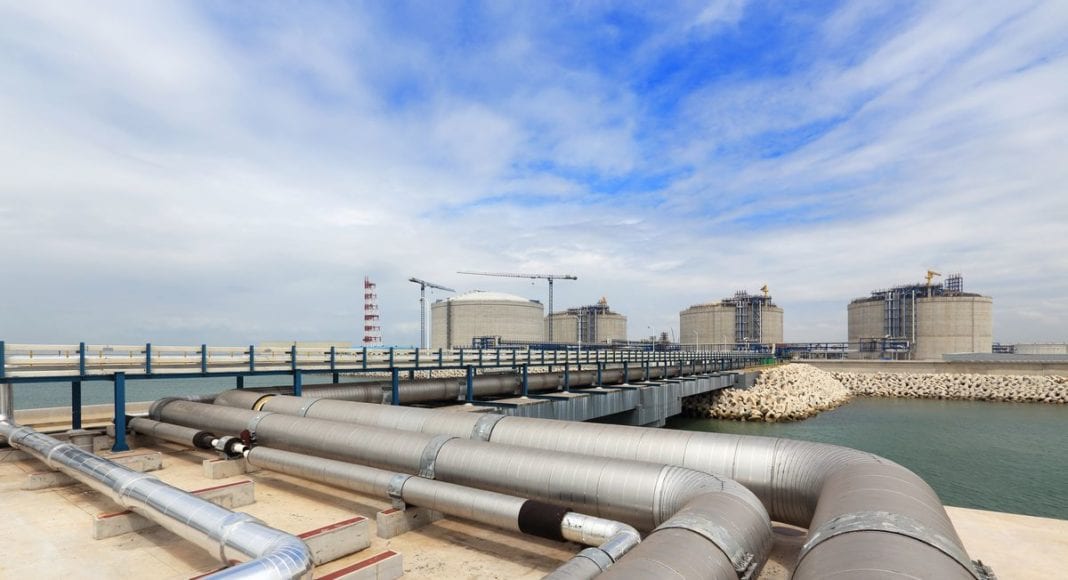By Joel Bhagwandin
A contextual Economic & Financial Analysis of Guyana’s Gas to Shore Project
Part 2
Though it is assumed that ExxonMobil and its partners will be financing about 50 percent of the cost of the gas-to-shore project, the Government will have to finance 50 percent or US$200 million. One has to consider the fact that because of Guyana’s development trajectory, and now political stability to some extent, and its geopolitical importance, the financing model can take many forms aimed at reducing the financing risks by pursing an optimum model. Due to these factors, it is easier now to mobilize resources and raise financing from a variety of sources and instruments than it was 15 years ago when Guyana was not the center of global interests as it is now. It is because of these developments, investors’ confidence, both local and foreign, is at its highest since the last two decades.
As an example, the financing model for the project can very well be one in which there is a Public Private Partnership (PPP) where a consortium of investors can be put together and/or where a publicly traded company can be established to attract investors from anywhere in the region, locally, the diaspora and even global investors. Given the nature and the technicalities of the project though, a project financing model can be explored wherein a Special Purpose Vehicle (SPV) can be established to raise financing for the project. In this arrangement, the Government can retain some amount of equity together with financing through other debt and equity instruments from the private sector, foreign investors and the local, regional or international capital market.
If the Government opted to hold 15% equity, for example, and the remaining 35% of the financing cost is raised through other instruments from private investors and the local capital market, then the Government’s share will only amount to US$30 million or GY$6.5 billion which will have virtually less than 1% impact on the public debt.
More importantly, in view of the development trajectory that Guyana is embarking upon over the next decade coupled with the emerging oil and gas sector, and of course projects such as gas-to-shore – drawing from the above illustrations; hereunder mentioned are some of the long-term economic benefits that can be derived from these developmental and transformational projects:
- Lower energy cost can drive a strong industrialized economy and attract more foreign direct investments. Currently, energy costs accounts for 40% – 50% of the operating costs for manufacturing firms.
- Therefore, lower energy cost can facilitate greater economies of scale and economies of scope for firms and overall national competitiveness.
- From looking at private investment data over the last ten years, the annual average growth in private investment was 39% or by GY$22 billion, and averaging GY$116 billion. Hence, 50% reduction in energy cost can result in more than 100% annual increase in private investments or by more than GY$200 billion.
- Development projects such as the housing drive targeting 50,000 allocation of house lots which is about 10,000 per year: assuming that 5,000 – 10,000 new homes are built in a year at an average cost per home of $15 million – this can translate to G$75 billion – G$150 billion injections in the economy annually in housing development alone.
- This in turn, will trickle down to increased loans in the banking sector, will also drive demand in other sectors such as the construction and hardware suppliers, contractors/ home builders – thus the creation of more than 20,000 jobs within the construction sector, contracting, homebuilders, banking and tourism.
- Over the next five to ten years the estimated total public and private investment in major infrastructure and developmental projects can amount to GY$7.2 trillion or an average of GY$719 billion annually in public and private investments.
- The current average total public and private investments from looking at the trend over the last ten years was approximately GY$345 billion annually. With Guyana’s development trajectory, this sum can increase annually by 52% or by GY$345 billion over the next decade.
- Post recovery period for Liza 1, oil revenues can reach over GY$100 billion annually.
- Public and private investments can potentially increase by more than 50% annually and can effectively translate to the creation of more than 100,000 jobs and tremendous growth in entrepreneurship opportunities during this period. In this regard, unemployment is currently estimated to be more than 25% or 125,000 persons of the total labour force. This number can be reduced to the lower single digits – around 3% to 5% over the next five years and/or by the end of the decade.
- The implementation of the gas-to-shore project which will become a major part of Guyana’s energy mix can result in more than 50% savings on fuel imports which is currently over US$500 million, thereby saving about US$250 million in fuel imports annually.
- Savings in the country’s import bill and stronger growth in exports as a result of enhanced national competitiveness attributed to lower energy cost.
- This can ultimately translate to the country enjoying a trade balance surplus from a deficit position as it has always been. A trade balance surplus is a signal of stronger macroeconomic stability and a strong and stable domestic currency.
- Guyana can also become a net exporter of energy/natural gas products and by-products within the Caribbean.
Guyana is well positioned to lead a massive regional integration drive given the development trajectory the country is embarking upon. This is the important context within which the analyses conducted herein is premised regarding the gas-to-shore project. Proponents who are of the view that the project is not economically and financially feasible ignored this fundamental context and many other important variables.
A number of scenarios and estimates were used in the analysis to determine whether the project is deemed meritorious in terms of its economic viability. To this end, the findings of the analysis indicated that the project can achieve its objective of reducing energy cost by 50% or more while remaining a profitable venture, and the initial investment cost can be recovered within a period of four to seven years.
Moreover, the long-term economic viability with the location of the project in mind, is based on the fact that evidently, the development of the country is moving towards the South with the intention to eventually build a secondary city on the Linden Highway. The proposed location for the project is earmarked to be an industrialized zone given the access to thousands of acres of land that can be transformed into massive agricultural activities. The location on the West Bank is also within reasonable proximity adjacent to the East Bank corridor – where a number of infrastructural developments will take place as well as commercial and industrial activities. As such, the gas-to-shore project will certainly yield long term economic benefits for the entire country and is deemed economically sensible to be built at the exact proposed location for these reasons. In so doing, this can result in efficient and cost-effective distribution channels given where geographic development of the country is moving towards.
Guyana’s development has been stymied for more than ten years owing to its peculiar development challenges as described in this paper. The time has now come for all of Guyana and its people to embrace the development path the country is embarking upon and support the policymakers to achieve these goals. As was shown in these contextual analyses, the development projects being pursued were not conceptualized haphazardly or through an overnight exercise. Logically, the country’s development can only move now in one direction and that is more in-land and towards the South. For too long Guyana has been an underdeveloped country and it would be good for everyone to embrace this strategy and contribute their skills and expertise in finding solutions to advance this very ambitious, relevant and much needed development path for the country. The development strategy of the country by the current regime was developed over 25 years ago and it remains relevant today simply because the geographic landscape of Guyana has not changed, and the country’s development was stymied for many years.
The contextual analysis essentially concludes that the gas-to-shore project is deemed to be economically and financially viable and will have almost zero impact on the country’s public debt – contrary to the views of other proponents who believe that this will lead to a debt trap.
Read Part 1 HERE
About the Author
 Mr. Joel Bhagwandin is a strong finance professional with over thirteen years’ experience in commercial banking, the financial sector and private sector development combined. He is the Chief Financial Advisor/Analyst of JB Consultancy & Associates, a consulting firm involved in the provision of business & financial consulting in the areas of banking and financial advisory solutions, corporate finance and business analysis for Private Corporations; Small and Medium Sized Enterprises (SMEs), as well as the Public Sector.
Mr. Joel Bhagwandin is a strong finance professional with over thirteen years’ experience in commercial banking, the financial sector and private sector development combined. He is the Chief Financial Advisor/Analyst of JB Consultancy & Associates, a consulting firm involved in the provision of business & financial consulting in the areas of banking and financial advisory solutions, corporate finance and business analysis for Private Corporations; Small and Medium Sized Enterprises (SMEs), as well as the Public Sector.
Often described as a prolific academic, Joel Bhagwandin is a part time Lecturer for both MBA and BBA programmes in business economics, business and financial management courses with various tertiary level educational institutions and he is actively engaged in academic research work and public debates on a range of economic and finance issues in Guyana. He has Authored more than 200 articles on economic and finance issues, and policy analysis within the context of a developing economy published in the Guyana Times under a weekly column titled “the Economy & Finance”.
He is the holder of a Master of Science Degree in Business Management with specialization in Global Finance, Financial Markets, Institutions and Banking from Edinburgh Napier University; an Executive Certificate in Macro-financial policy-making in Emerging Markets from Columbia University, School of International Public Affairs in New York, and several other Diploma Certificates in Business Communication, Marketing, Business organization and Environment from the University of Cambridge. And, he is currently pursuing his second Master’s Degree, MSc. (Accounting & Finance) through London School of International Business/University of Chichester; while simultaneously pursuing a PhD in Development studies through published works as an alumnus of Edinburgh Napier University, Scotland, United Kingdom.




